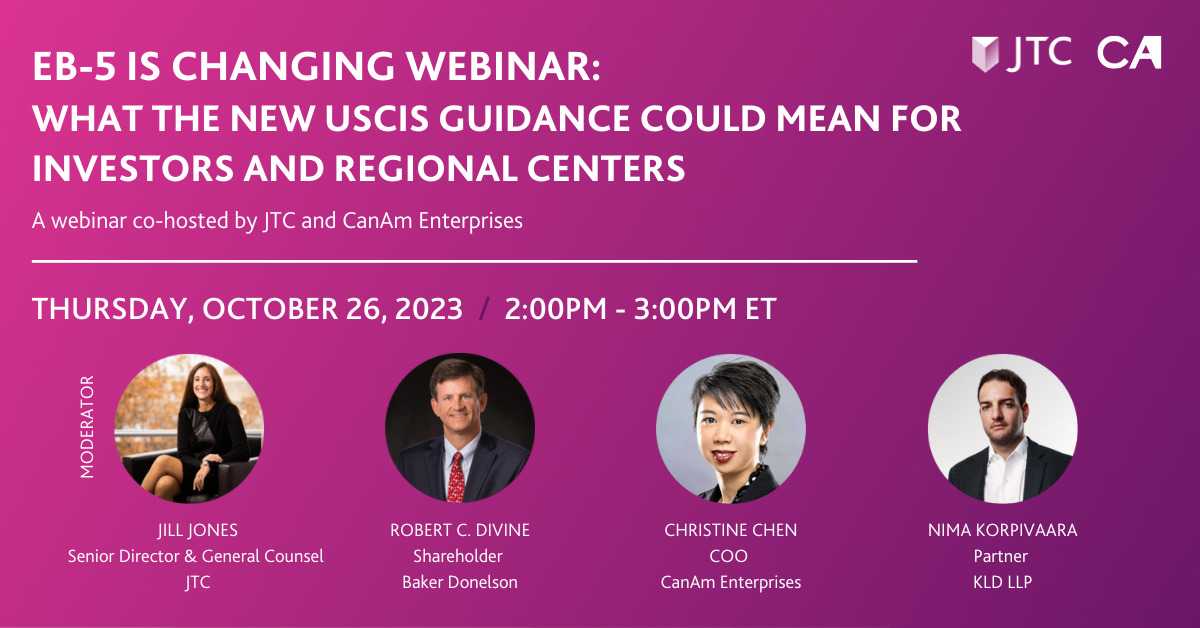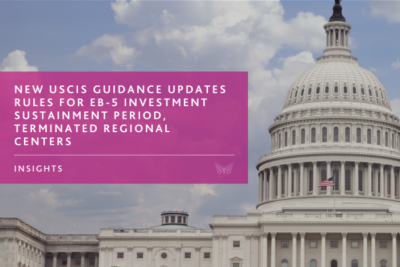As the EB-5 landscape continues to evolve, one question is looming larger than ever: What happens next year?
With retrogression disrupting applicants from China and India and even “Rest of World” investors facing uncertainty, understanding the math behind EB-5 visa allocation is no longer optional—it’s essential. In this blog, we dive into the mechanics of visa allocation, how the Reform and Integrity Act (RIA) shapes that process, and what’s likely ahead for FY2026. Spoiler alert: there’s good news for those who act soon.
New to the Visa Bulletin? Read our full explainer on how to understand it here.
How EB-5 Visa Numbers Are Calculated
Each year, about 7.1% of the total employment-based green cards are allocated to EB-5 investors. In FY2026, that means roughly 10,295 EB-5 visas will be available, assuming an overall employment-based ceiling of 145,000.
Charlie Oppenheim, former Chief of Visa Control at the U.S. Department of State, broke it down during our recent webinar with WR Immigration:
“The EB-5 category will get 7.1% of the annual employment-based visa total. Of those, 32% are reserved under the RIA—20% for rural, 10% for high-unemployment, and 2% for infrastructure projects—leaving the remaining 68% for unreserved applicants.”
In numbers:
- 3,294 visas are expected for the reserved categories
- 7,001 visas are expected for unreserved applicants (typically pre-RIA investors or those not in TEA/infrastructure projects)
Carryover Could Boost the FY2026 Numbers
What makes FY2026 especially promising is the potential for carryover—unused reserved visas from FY2025 could be added to the unreserved pool in FY2026.
“Depending on how many reserved visa numbers are used, there could be a pretty big waterfall,” said Joey Barnett, Partner at WR Immigration. “Possibly up to 10,000 unreserved EB-5 visas could be available next year. That’s a lot of families who could move forward.”
This dynamic underscores the opportunity for pre-RIA investors who’ve faced long waits and for newer investors who are still deciding which visa path to take.
Why Reserved Categories Remain Current (For Now)
Despite concerns raised in the January Visa Bulletin, all reserved EB-5 categories remain current—and that’s not a coincidence.
Oppenheim explained:
“There have likely been fewer than several hundred reserved category visas used this fiscal year. That’s simply because USCIS hasn’t approved enough I-526Es to create demand that exceeds supply.”
This slow adjudication pace means the anticipated backlog hasn’t yet materialized, offering a window of opportunity—but one that’s unlikely to last beyond early 2026.
What Could Change in FY2026
With a new visa year beginning on October 1, here’s what investors should expect:
- A reset in visa availability
New visa numbers are issued, including for reserved categories. If USCIS picks up the pace, demand could spike quickly. - Risk of ping-ponging final action dates
With the Department of State operating under new allocation rules—and lacking historical precedent under RIA—visa bulletin movement could swing unpredictably. “We’re going to see some ping-ponging,” Barnett warned. “Especially if rest-of-world demand starts using up unreserved visas meant for others.” - Possibility of Rest-of-World cutoff dates
While never before imposed for EB-5, Oppenheim noted a real possibility that DOS may have to establish a Rest-of-World final action date if visa usage exceeds projections.
“They overextended themselves this year,” Oppenheim said. “If they hit the ceiling before September, they may have to impose a rest-of-world date for unreserved visas temporarily.”
What Investors Should Do Now
Given the unpredictability of the Visa Bulletin, both Barnett and Oppenheim stressed the same point: act now while categories remain current.
“It doesn’t matter how fast a project is selling or how high the demand is—if USCIS hasn’t approved your petition yet, you’re not generating visa demand,” Barnett explained. “But that’s going to change. Once they ramp up, this window could close quickly.”
Final Thoughts: Get in Line Before It Moves Again
Visa math may seem complicated, but it boils down to one thing: demand is growing, and the rules are changing.
The good news? FY2026 could bring more visas, especially for unreserved investors. The catch? Delaying your I-526E filing—or waiting to file your adjustment of status—could mean missing the current window for fast-tracking your green card.




